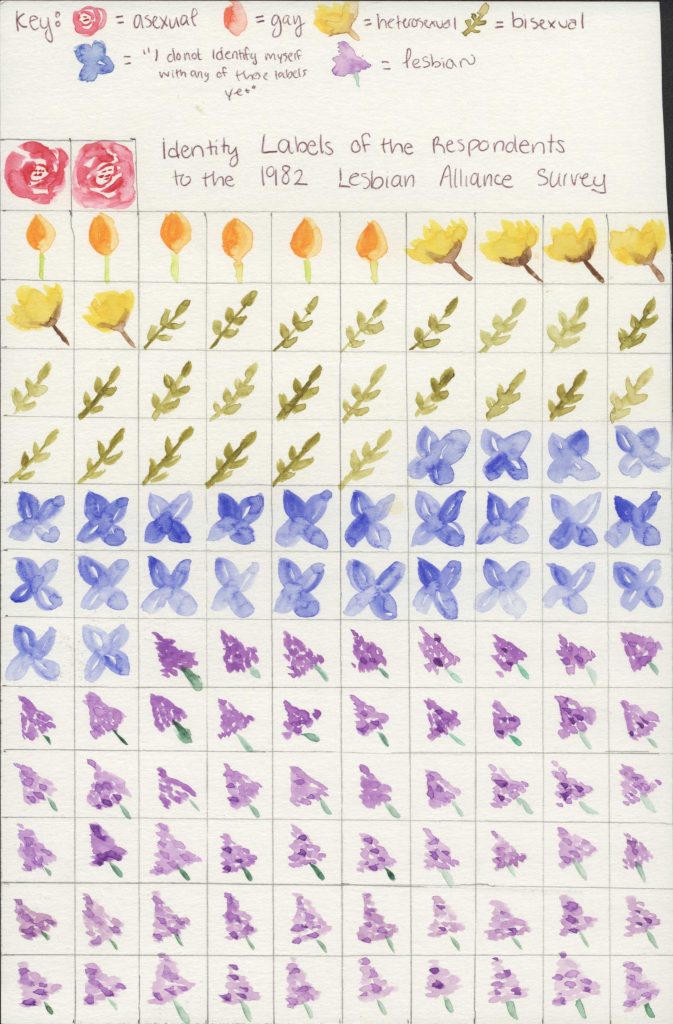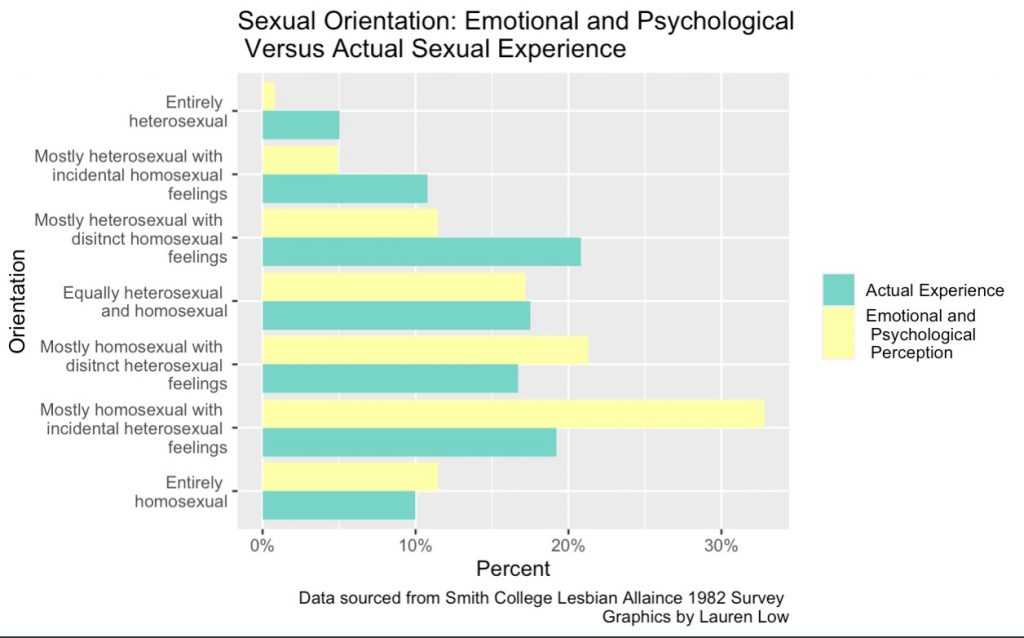124 students completed and returned the SCLA survey, although some declined to answer a variety of questions. Only 31.1% of the respondents were members of the Smith College Lesbian Alliance, so the survey illustrates the perspectives of LGBTQ students not involved in lesbian organizing on campus. 1 38.8% of the students were seniors, 30.6% were juniors, 24.2% were sophomores, 4.8% were freshman and 1.6% called themselves “other.” Clearly, upperclass students were represented at higher rates than underclassman. 2
Though 61.3% were raised Christian, 12.9% were raised Jewish, 8.1% were raised in another religion, and 17.7% were raised with no religion. At the time of the survey, 53.3% of the respondents said they “have no religion now.” 3 Only 15.3% reported their family as being from “modest” or “poor” economic circumstances, and 49.2% said their family was “comfortable.” 4 These demographics generally represent the overall demographics of Smith at the time.
Only 13.7%, or 17 students, identified as being a “member of a racial or ethnic minority,” as illustrated by the graph below. 5 This generally also follows the racial makeup of Smith at the time. However, it is important to note that the experiences of white Smithies, overwhelmingly represented in this survey, might not represent the experiences of LGBT Smithies of color who attended Smith at the same time. Not until the 90s did specific organizations specifically for LGBT students of color arise on Smith’s campus. There is a lot more work to be done to learn about the particular struggles and specificities of LGBT students of color throughout Smith’s history.
Sexuality
The respondents reported a wide variety of sexual experiences, sexual identity labels, and perceived sexuality. The graphs below demonstrate the variety of experiences and labels that the respondents used. Do you think as many LGBT students on campus identify as lesbian today? The survey did not ask any questions about gender or gender identity. How might the terms offered to the respondents in 1982 fall short of the identity categories Smithies use today?
It is also notable that 21.3% of respondents said that they “do not identify myself with any of these [labels] yet.” 6 Although all the respondents fit into the category of “Smith women who have been, are, or might be involved in sexual relationships with other women,” a large percentage of them didn’t use the categories of lesbian, gay, or bisexual. They might have been questioning their identity or just eschewed labels.



- Lesbian Alliance Student Survey Results, May 1983, CA-MS-00112, Box 3016.1, Folder 8, Lesbian Bisexual Transgender Alliance Records, Smith College Archives, https://findingaids.smith.edu/repositories/4/resources/16/collection_organization, p. 115 ↩
- Ibid., 1. ↩
- Ibid., 9. ↩
- Ibid., 8. ↩
- Ibid., 10. ↩
- Ibid., 74. ↩
